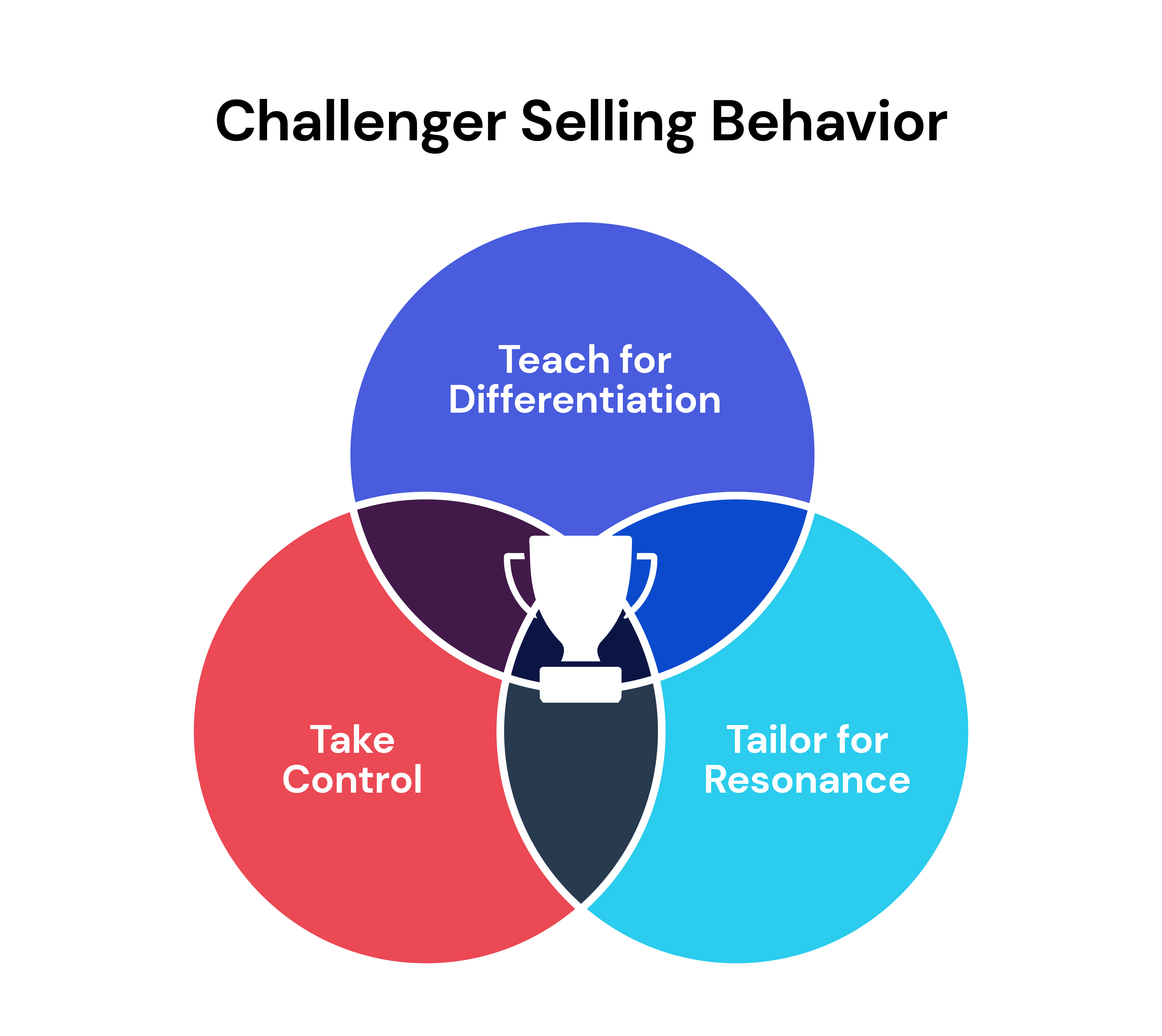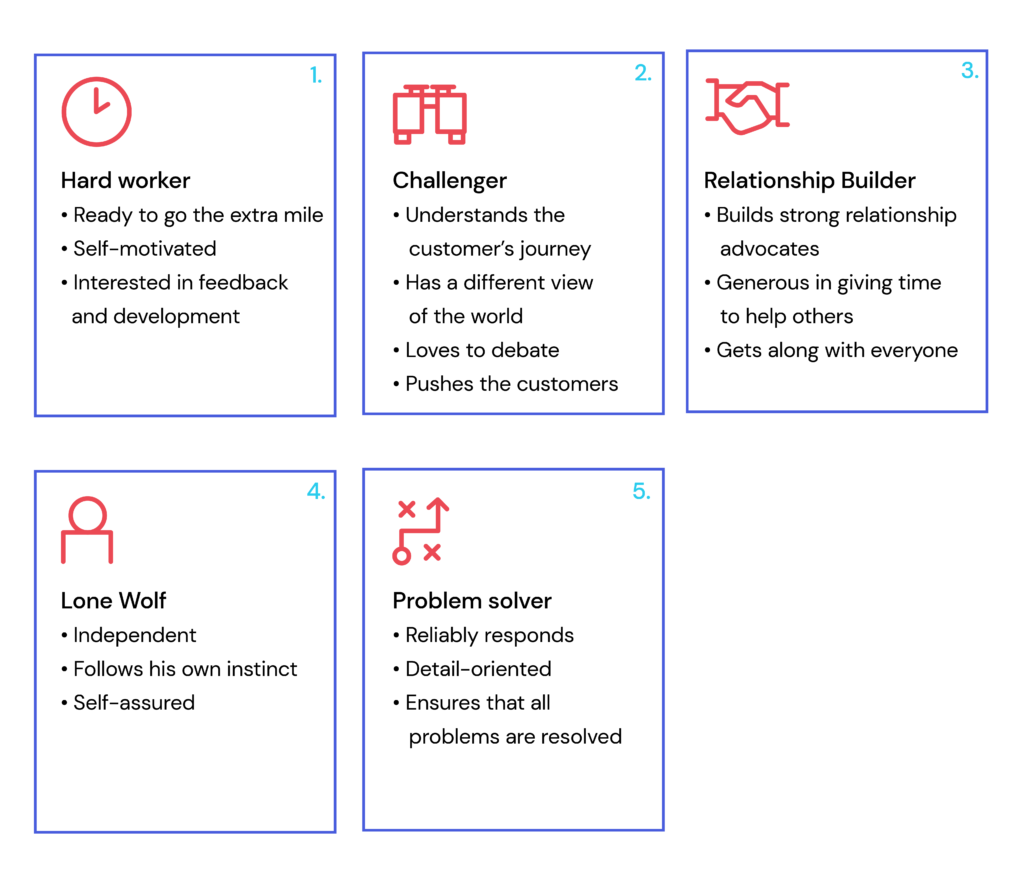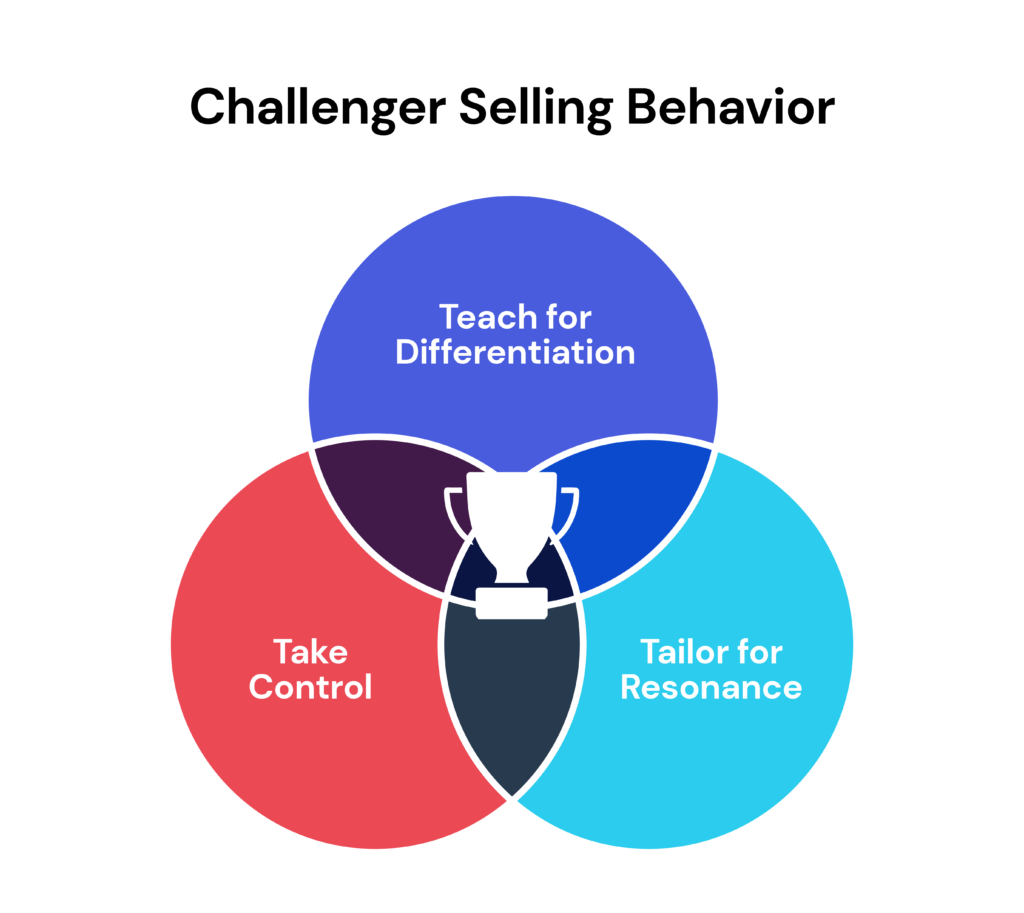 BACK TO BLOG
BACK TO BLOG
Everything you need to know about the Challenger Sales Methodology

 BACK TO BLOG
BACK TO BLOG

If selling B2B solutions is complex, purchasing them is even more challenging. With the increased number and diversity of stakeholders involved in enterprise selling, purchase dynamics can often stall deals. Winning modern buyers’ trust is difficult, especially today, where they approach most purchases with more information than ever, making the buying process a greater burden on your end of the bargain.
In many sales organizations, there are few sales performers that drive the majority of revenue. Who are these stellar performers? What do they do differently than the rest of their sales team? How can their actions be translated to other reps? Let’s take a deeper look:


The amount of service information in enterprise sales setting today has become overwhelming. However, the best sales reps have turned this conundrum into a successful opportunity. They’ve figured out how to optimize their limited buyer contact to make the conversations they have more useful and successful with the challenger sales model.

The challenger selling goes beyond conventional consultative models or solutions selling methodologies, where your sales team dramatically seeks out the buyer's ongoing concerns. This methodology helps customers see their competitive challenges in a new light, addressing specific pain points.
While most salespeople focus on building customer relationships and meeting customer requirements, the challenger focuses on pushing customers’ thinking, introducing new solutions to their problems, and illuminating problems that customers overlook. The challenger changes the customer’s perception of his situation and leads the customer to their solution.
The Challenger Sales Model is a model based on the idea that sales professionals who challenge their customers and offer unique insights are more likely to succeed than those who simply provide information and build relationships. The model identifies five types of sales reps: the Hard Worker, the Relationship Builder, the Lone Wolf, the Reactive Problem Solver, and the Challenger. According to the model, Challengers are the most successful type of salesperson, as they are able to use their insights and knowledge to challenge their customers' thinking and influence their decisions.
The model consists of three phases: Teach, Tailor, and Take Control. In the Teach phase, the salesperson provides the customer with new insights and perspectives. In the Tailor phase, the salesperson tailors the solution to the customer's specific needs. In the Take Control phase, the salesperson takes control of the sales process and leads the customer to a decision.
Why do challenger reps do so well while others struggle? These sales reps use assertive attributes to demonstrate three distinct skills:

Challengers introduce buyers to new ways of thinking about their business, which reveals how buyers can gain more value. They’re more like a trusted advisor than a simple order taker.
Understand the evaluation criteria and how it connects to the business objectives, and ensure everyone in the team is working towards helping your buyers realize value.
Debating, challenging, and pushing—challengers believe in taking control of what’s being talked about and pushing the sale upward in the organization.
Before any sales reps can begin to adopt the Challenger sale methodology into their approach, they must be able to take control of the sale and be artful influencers who help customers make purchasing decisions. Much like a rollercoaster, the Challenger sale immediately taps into the prospect’s ultimate fears, then raises their hopes by positioning the product as the solution and ends on an adrenaline-fueled high with the buyer eager and ready to buy. Let’s delve into how to adopt the Challenger sale into your process below:
You don’t start off with a product pitch during an early-stage conversation with a challenger. Here, the goal is to start conversations that get prospects talking about their problems and pave the way for making the sale later. Instead of jumping straight to the solution, the challenger builds curiosity and credibility by thoroughly researching its buyers and strategically orchestrating its approach.
By now, your prospect might’ve shared their biggest pain point, so your job is to reframe their pain as an opportunity for growth. And so, this phase is all about identifying the root of the problem—first, as the prospect sees it, and second, as the Challenger understands it. To do this, the challenger continues to build trust by demonstrating their knowledge before surprising their prospect with insights that upend their misconceptions. The goal here is to reframe the problem by helping the prospect see the gaps in their understanding.
Modern buyers can outsmart your sales team in no time. Highlighting problems does not qualify as a compelling reason to break from the status quo. Once you’ve highlighted potential roadblocks and pain points of the buyer, he now challenges the buyer to reconsider their beliefs on how to solve the problem. It is still not time to sell but to spark buyers' curiosity and prompt them to question their assumptions.
Subconscious emotions frequently drive decision-making, and the Challenger takes full advantage of this during the third phase. Offering Success stories, case studies, and client testimonials are a great way to use mentions to shift the buyer’s perspective and build a stronger case for your solution- one that explains how others solved their problem. Here the idea is to shock prospects into realizing that their preconceived ideas might be wrong. Finally, the sales rep intensifies its assertions with data that further cements its credibility.
Now that you’ve built your rapport and amplified the importance of solving the problem, it’s time to introduce the behavioral changes the buyer would have to adopt to make good at solving it.
Here the ultimate aim is to educate the buyer on what the impeccable solution to their problem looks like- without mentioning your offering. “But why can’t I introduce the solution right away now that we’ve built the momentum for the discussion?”By introducing the answer to the prospect first, you’ve already sold them on the idea when you finally present the product.
Once the Challenger’s done the hard work of earning trust, demonstrating credibility, and getting prospects to envision a new future, it’s finally time to discuss the product. This will mean different things for different companies. For SaaS organizations, this will typically mean offering the prospect a demo. It’s an approach that relies heavily on confidence and the ability to teach and persuade—skills and traits that enable challengers to succeed in increasingly complex sales environments.

While it may be tempting to implement the sales methodology right away, it is important that you evaluate whether you’re a new product category, selling in a well-established marketing, or combating in a competitive one.
If you’re a new disruptive new technology or have a unique perspective on a traditional industry, then you’re in luck with the Challenger sales methodology. You can use the Challenger methodology to reframe buyers' understandings with your polished perspective. In many of these cases, you may have to change the narrative and use this approach throughout the relationship to build the case for your product. Here it is important to note that your sales reps understand your buyer’s end goals, map their journey, identify clear and verifiable outcomes for each stage, and develop a dynamic buyer-aligned sales process; you’re, in a way helping your sales front collaborate better with buyers with greater value.
How many sales reps do you have in your team? 20? 50? When you train them with a new selling methodology and ask each of them how they adopted value selling in their deals, you will get 50 different responses. Too often than not, we send sellers off to training and think that they’ve been certified completely. But how do you know they’re equipped with the right understanding? Have they demonstrated to you their apprehension of the knowledge?
In an enterprise sales landscape fraught with complex procurement processes and daunting revenue goals, your sellers have less than no time to meet the potential stakeholders that can make or break the deal.

No matter what sales methodology you zero down with, your sales efforts may not have guaranteed success unless your sales team truly comprehends what buyers value, how they gather information, and how purchase decisions get made. And to smoothly manage sales cycles with modern buyers, your sales teams need maximum alignment on their activities, plans, and, more importantly, the buyer themselves.
With a “buyer-centric” sales process, your sales team can:
With buyer groups being composed of so many decision-makers today, it’s important for your sales team to understand the influence of these intertwined relationships. To run a well-oiled sales machine, you must ensure your sellers identify all these key stakeholders and their roles in the decision-making process, especially for enterprise deals. Without analyzing a visual representation of the relationships with the opportunity, you can’t strategize the people strategy in a deal.
BuyerAssist Relationship Mapping can help identify key decision-makers, influencers, and detractors early in the sales cycle and build a strategy around them to win the deal. By understanding the relationships between different stakeholders, sellers can tailor their sales pitch and approach to better align with the needs and interests of the buyers.
Challenger Sales is all about positioning yourself as an expert to your prospects and taking control of the conversation with the idea of taking the reigns of the entire sales process into your hands. Built around the idea of "teach, tailor, and take control," the book talks about the Challenger Sale as a tool to give customers information that they possibly can't learn on their own! To improve the efficacy of your sales efforts today, adopting a buyer-centric approach will only drive your business forward.
